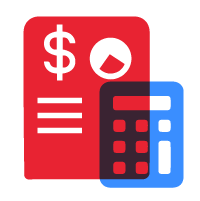Cash is the lifeblood of any business. Without it, even profitable companies can spiral into financial distress. This is where cash flow forecasting becomes a vital financial strategy. Whether you’re a small business owner managing day-to-day expenses or a CFO of a large corporation planning for long-term investments, accurately forecasting your cash flow enables smarter decisions, better preparedness, and stronger financial health.
Accurate cash flow forecasting supports business growth and empowers organizations to make more informed decisions, ensuring strategic planning and financial success.
This comprehensive guide will walk you through the fundamentals of cash flow forecasting, its importance, how to do it effectively, the tools that can help, and advanced tips to refine your approach.

What is Cash Flow Forecasting?
Cash flow forecasting is the process of predicting how much cash a business will have at any given time by estimating how much money will enter and leave your business over a defined future period. It provides a forward-looking view of your cash position, allowing you to anticipate shortages or surpluses before they occur.
There are three key components of any forecast:
- Cash Inflows – These include incoming cash from:
- Sales (cash and credit)
- Loan disbursements
- Capital injections (e.g., investor funding)
- Interest income
- Asset sales
When estimating cash inflows, it is important to consider expected inflows and all cash coming into the business from various sources.
- Cash Outflows – These are expenditures like:
- Rent and utilities
- Payroll and benefits
- Inventory purchases
- Taxes and loan repayments
- Equipment or capital expenditures
- Net Cash Flow – This is the difference between inflows and outflows, showing whether you’re cash-positive or cash-negative for the period.
Using accurate cash flow models is essential to create reliable cash forecasts that support effective financial planning and decision-making.
Forecasts can be tailored for a given period, such as 30 days, one year, or five years, to suit:
- Short-term cash management (daily/weekly)
- Medium- to long-term planning (monthly/quarterly/yearly)
Why Cash Flow Forecasting Matters
In business, running out of cash is one of the fastest paths to failure, regardless of how profitable you appear on paper. Many small and mid-sized companies close their doors not because of low sales or bad products, but because they didn’t anticipate cash shortages. This is where cash flow forecasting becomes essential.
Here’s why mastering cash flow forecasting is vital to your business’s survival and growth:
1. Maintaining Business Solvency
A business can be profitable on paper but still fail if it doesn’t have enough cash to meet its day-to-day obligations. Cash flow forecasting helps you maintain liquidity by projecting when money will come in and go out. Without accurate forecasting, businesses risk having insufficient cash balances, which can result in costly overdraft fees. This ensures you’re always able to pay salaries, settle invoices, and cover rent and utilities without disruption.
2. Informed Decision-Making
Whether you’re considering hiring new staff, purchasing equipment, or expanding into a new market, these decisions require confidence in your financial future. Cash flow forecasting allows you to gain insights into your financial position by understanding future cash inflows and outflows, supporting better decision-making. A solid forecast reveals whether you’ll have the funds available not just today, but in the weeks and months ahead—reducing guesswork and enabling sound strategic moves.
3. Preventing Emergencies
Cash shortfalls can arise suddenly and derail operations if not anticipated. Forecasting highlights periods when your cash reserves might dip below safe levels. As a key part of risk management, cash flow forecasting helps you anticipate and mitigate financial emergencies by identifying potential risks in advance. With this foresight, you can take action early—like renegotiating payment terms, delaying discretionary expenses, or arranging financing before a crisis hits.
4. Building Stakeholder Trust
Stakeholders—such as investors, lenders, and board members—expect transparency and financial control. Providing them with detailed, accurate forecasts shows that your business is being managed responsibly. This builds trust and can improve your chances of securing funding or favorable terms in future partnerships.
5. Strategic Growth
Sustainable growth depends on having the resources to fund it. Whether it’s launching a new product, entering a new market, or scaling your workforce, cash flow forecasting helps you align your growth ambitions with your financial capacity—so you grow smart, not just fast.
6. Better Inventory and Payment Management
Forecasting gives you insight into how cash cycles impact your supply chain. Integrating inventory management with cash flow forecasting helps optimize stock levels and cash reserves, ensuring product availability while supporting efficient business operations. With a clearer picture of incoming and outgoing cash, you can optimize inventory purchases, negotiate better supplier terms, and adjust customer payment schedules to maintain healthy cash reserves throughout the year.
Related Article:
Seamless Cash Flow Management: The Key to Financial Success for Your Business
Learn top strategies for managing cash flow and how outsourcing can optimize your business’s financial health. Improve your cash flow today with expert tips.
Types of Cash Flow Forecasting
Understanding the different types of forecasting methods is key to applying the right one for your business. The forecasting process typically involves a systematic series of steps, including data collection, integration with financial systems, and ongoing monitoring to improve accuracy. Different forecasting processes may be used depending on your business needs and operational workflows.
1. Direct Cash Flow Forecasting
This method looks at actual cash inflows and outflows over a short time frame—typically 1 to 13 weeks.
Use it for:
- Managing daily liquidity
- Making payroll or tax payments
- Planning short-term working capital
- Supporting accurate daily cash positioning to ensure real-time visibility into cash flow
How it works: You input expected payments (e.g., vendor invoices, salaries) and receipts (e.g., sales revenue, customer payments) for the upcoming days or weeks.
Benefits:
- Highly accurate for near-term forecasting
- Helps avoid overdrafts and cash crunches
- Provides timely daily cash positioning data to optimize liquidity management
Limitations:
- Labor-intensive
- Less useful for long-range planning
2. Indirect Cash Flow Forecasting
This method projects cash flow using the accrual accounting method, starting with net income and adjusting for non-cash items and changes in working capital.
Use it for:
- Long-term financial planning
- Budgeting and performance analysis
- Investment and funding decisions
- Financial forecasting for accurate long-term cash flow projections
How it works: It uses data from your income statement and balance sheet to predict cash availability over a period of 6–12 months or more.
Benefits:
- Ties directly to financial statements
- Better suited for strategic decisions
Limitations:
- Less accurate in the short term
- Requires strong accounting knowledge
How to Create a Cash Flow Forecast
Here’s a detailed, step-by-step breakdown to help you build an effective forecast:
Accurately collecting transaction information, such as all relevant cash inflows and outflows, is essential for building a reliable forecast.
Step 1: Choose the Time Frame
Decide on the duration of your forecast:
- Short-term: Weekly or monthly for managing day-to-day operations
- Medium-term: 3–6 months for planning ahead
- Long-term: 12+ months for strategic investments
Step 2: Gather Financial Data
Start with historical data:
- Sales records
- Receivables and payables
- Payroll and vendor expenses
- Tax liabilities
- Bank statements
It is essential to gather all the data needed for an accurate forecast, as having comprehensive visibility into your cash positions ensures your projections are reliable.
This provides a baseline to estimate future trends.
Step 3: Forecast Cash Inflows
Be conservative in your estimates. Include:
- Expected sales (based on pipeline and seasonality)
- Payments from existing customers
- Accounts receivable (expected cash from outstanding invoices)
- Interest or investment income
- Incoming loans or capital raises
Tip: Apply historical payment patterns. If customers usually pay after 45 days, factor that into your timeline.
Step 4: Forecast Cash Outflows
Track all potential expenses:
- Fixed costs (rent, salaries, insurance)
- Variable costs (materials, utilities)
- Accounts payable (vendor payments, payment schedules, and other payables)
- Planned investments (new equipment, software)
- One-off costs (legal fees, repairs)
- Tax and loan repayments
Tip: Break expenses into essential vs. discretionary to prioritize spending if cash gets tight.
Step 5: Calculate Net Cash Flow
Subtract total outflows from total inflows for each period.
Formula: Net Cash Flow = Cash Inflows – Cash Outflows
Step 6: Determine Opening and Closing Balances
Start with your current cash balance. Add your net cash flow to determine the ending cash balance for the period. Tracking both opening and closing balances is essential for accurate cash positioning, as it provides a clear view of your company’s current financial situation and supports better cash flow forecasting.
Formula: Closing Balance = Opening Balance + Net Cash Flow
Roll this forward to the next accounting period, using the previous closing balance as the next opening balance.
Step 7: Review and Update Regularly
Business is dynamic, and forecasts must adapt. Treasury teams play a crucial role in regularly reviewing and updating cash flow forecasts to ensure accuracy and support strategic decision-making. Review your forecast weekly or monthly and update based on:
- Changes in customer behavior
- Delayed payments or unexpected expenses
- Market shifts or new opportunities
Common Challenges and How to Overcome Them
Cash flow forecasting is an essential financial practice, but it’s not without its challenges. Many businesses struggle with inaccurate data, flawed assumptions, and a lack of internal coordination—often leading to forecasts that don’t reflect reality.
Addressing these forecasting challenges helps build resilience in business operations, enabling companies to better withstand disruptions and adapt to changing conditions.
Identifying these common pitfalls and applying practical solutions can significantly improve the reliability and value of your projections.
1. Data Inaccuracy
The quality of your forecast depends entirely on the accuracy of your financial data. If your records are outdated, inconsistent, or incomplete, your projections will be misleading and difficult to act on.
Solution: Use reliable accounting or enterprise resource planning (ERP) software to centralize and automate financial tracking. Reconcile your books regularly and ensure that data entry is accurate and standardized across departments.
2. Unrealistic Assumptions
Assuming that all invoices will be paid on time or that revenue will grow steadily can cause you to overestimate cash inflows. These kinds of optimistic assumptions often result in shortfalls when reality doesn’t match expectations.
Solution: Use historical data to understand average payment timelines and customer behavior. Apply conservative estimates to revenue forecasts and consider building a cash buffer to cover delays or unexpected expenses.
3. Seasonal Sales Fluctuations
Many businesses see significant changes in cash flow during specific times of the year. If these seasonal patterns aren’t factored into your forecast, you may face liquidity issues during slower months.
Solution: Look at data from previous years to identify recurring sales cycles and slow periods. Adjust your forecast to reflect these fluctuations and plan your expenditures accordingly.
4. Economic Uncertainty
External factors such as inflation, interest rates, and market disruptions can quickly affect your cash flow. Ignoring these influences can leave your business vulnerable to sudden financial strain.
Solution: Develop multiple forecast scenarios, including optimistic, conservative, and worst-case outcomes. Create different cash flow scenarios to illustrate how various economic conditions could impact your revenue inflows and liquidity. Keep a contingency reserve or access to short-term financing in place to manage risk during unpredictable periods.
5. Lack of Collaboration
When forecasting is handled solely by the finance team, important insights from other departments may be missed. This can result in an incomplete picture of your financial future.
Solution: Make cash flow forecasting a team effort. Gather input from sales, operations, HR, and procurement to ensure that all planned activities and potential changes are reflected in the forecast.
Tools to Help You Forecast Cash Flow
Whether you’re a small business owner or part of a large enterprise, choosing the right solution can significantly enhance your forecasting accuracy and efficiency. Cash forecasting is enhanced by specialized cash flow forecasting tools that analyze both live and historical data for more reliable financial predictions.
Below are some of the most commonly used tools, each with its own strengths and trade-offs.
1. Spreadsheets (Excel/Google Sheets)
Ideal for:
- Small businesses
- Custom-built forecasting templates
Pros: Flexible, low-cost
Cons: Error-prone, manual, time-consuming
2. Accounting Software
Platforms like QuickBooks, Xero, Zoho Books offer integrated forecasting tools.
Pros: Auto-syncs with real-time data
Cons: May lack advanced forecasting features
3. Dedicated Forecasting Tools
Apps like Float, Fathom, Pulse, CashFlowTool provide detailed forecasting, scenario planning, and visual dashboards.
Pros: Automation, multi-scenario modeling, visual reports
Cons: Subscription cost, learning curve
4. ERP Systems
Larger companies use platforms like SAP, Oracle NetSuite for cash flow forecasting as part of integrated financial planning.
Pros: Scalable, enterprise-level precision
Cons: High setup cost, complex configuration
Advanced Tips for Better Forecasting
Once you’ve mastered the basics of cash flow forecasting, taking your strategy to the next level can unlock even more value. These advanced techniques help refine accuracy, improve agility, and provide deeper financial insight—ensuring your business is well-prepared for both opportunities and challenges.
When monitoring your cash conversion cycle, pay close attention to the company’s CCC and days payable outstanding. These key metrics help you understand how efficiently your business manages working capital and cash flow, allowing you to identify areas for improvement.
Additionally, leveraging automation can help businesses retain more cash by optimizing cash inflows and managing outflows more effectively. This not only streamlines processes but also ensures you have more cash available to meet obligations and invest in growth.
1. Use Rolling Forecasts
Instead of forecasting just to the fiscal year-end, always extend your forecast forward. A rolling 12-month forecast gives continuous visibility.
2. Scenario Planning
Create multiple “what if” forecasts:
- Best case
- Worst case
- Most likely case
This prepares you for uncertainties and builds resilience.
3. Incorporate KPIs
Use key performance indicators like:
- Days Sales Outstanding (DSO)
- Burn Rate
- Current Ratio
These help evaluate liquidity and financial health.
4. Monitor Cash Conversion Cycle
Track how long it takes to convert investment in inventory and resources into cash. Shorter cycles improve liquidity.
5. Automate Where Possible
Automating forecasting with AI-based tools reduces human error, saves time, and enhances predictive capabilities.
Cash Flow Forecasting in Different Industries
Cash flow forecasting isn’t a one-size-fits-all process. Every industry has unique operational cycles, revenue models, and financial pressures that shape how cash moves in and out of the business. Here are some examples:
Startups
- Challenges: Startups typically operate with limited revenue and high upfront expenses, making cash flow especially critical in the early stages.
- Focus Areas:
- Burn Rate Monitoring: Startups must carefully track how fast they’re spending investor capital.
- Runway Planning: Accurate forecasts help determine how many months the company can continue operating before needing more funding.
- Funding Strategy: Cash flow data informs when to seek additional investment rounds, and how much capital is required to hit key milestones.
- Tip: Use conservative projections and build in buffers to account for unpredictable growth and delays in funding.
Retail & E-Commerce
- Challenges: These businesses often experience large seasonal fluctuations and must manage inventory cycles closely.
- Focus Areas:
- Seasonality Management: Forecasting must account for peak seasons (like holidays or sales events) and off-peak lulls.
- Inventory Spending: Large upfront purchases of stock can drain cash quickly, so planning around lead times and demand is essential.
- Return Rates & Discounts: Returns and markdowns impact realized revenue and should be reflected in the forecast.
- Tip: Build forecasts around historical seasonal data, and coordinate inventory purchases with projected cash availability.
Service Businesses
- Challenges: Service-based companies rely on human capital and timely client payments, often working with variable billing cycles.
- Focus Areas:
- Receivables Tracking: Delayed payments can create cash shortfalls, especially when payroll and fixed costs remain steady.
- Project-Based Revenue: Income may be tied to contract milestones, completion percentages, or billable hours.
- Retainers & Deferred Payments: These require forecasting around when revenue is recognized versus when cash is received.
- Tip: Use aging reports and DSO (Days Sales Outstanding) to forecast collections more accurately.
Manufacturing
- Challenges: Manufacturers face long production cycles, high capital investment, and tight margins—all of which can strain cash flow.
- Focus Areas:
- Supply Chain Costs: Payments to suppliers for raw materials can occur well before the finished product is sold.
- Inventory Turnover: Overstocking ties up cash, while understocking can delay sales and disrupt revenue flow.
- Capital Expenditures: Equipment purchases and maintenance must be planned around expected cash inflows.
- Tip: Align production planning with cash availability, and negotiate supplier terms to better match your cash cycle.
Simplify Your Cash Flow Forecasting Today
Struggling to keep up with the complexities of cash flow forecasting? Let our expert accounting team handle it for you! By outsourcing your accounting services to us, you gain access to accurate forecasts, timely insights, and strategic financial guidance—freeing you to focus on growing your business. Contact us today to streamline your cash flow management and make smarter, data-driven decisions with confidence.
Frequently Asked Questions
How often should I update my cash flow forecast?
It depends on your business type and cash flow volatility. For most small to medium businesses, a monthly update is sufficient. However, if your company has tight cash flow margins or is in a high-growth phase, consider weekly or biweekly updates for better control and responsiveness.
What’s the difference between direct and indirect cash flow forecasting?
Direct forecasting uses actual cash inflows and outflows (like customer payments and supplier bills) and is best for short-term projections. On the other hand, indirect forecasting starts with net income and adjusts for non-cash items (like depreciation), making it more useful for long-term planning and financial modeling.
Can I use cash flow forecasting to manage debt repayment?
Absolutely. A forecast helps you schedule debt payments around available cash, avoid missed deadlines, and decide when to refinance or consolidate loans. It’s also helpful for ensuring you maintain healthy debt service coverage ratios (DSCR), especially if lenders require it.
Is it possible to forecast cash flow without historical data?
Yes, especially for startups or new ventures. In such cases, use industry benchmarks, projected sales, and estimated expenses. It won’t be perfect, but it’s a critical step in budgeting and identifying potential funding needs. As you operate, you can refine the forecast using actuals.
How does cash flow forecasting impact business valuation?
Accurate forecasting shows that your business is well-managed and financially disciplined, which can boost investor confidence and improve valuation. Strong, predictable cash flows are a key component in discounted cash flow (DCF) models, commonly used by investors and buyers.







